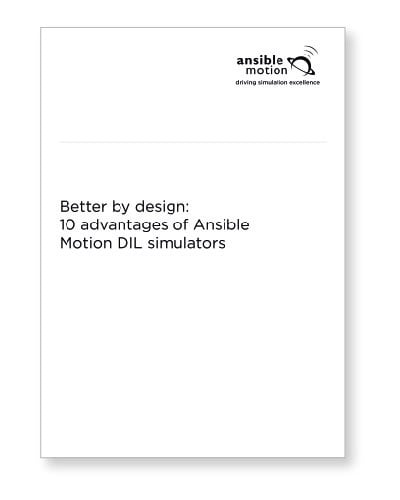 Simulation solutions can have a profound impact on cost savings in automotive development – but understanding the direct and indirect financial benefits of simulation is key to gaining organisational buy-in. The automotive industry is at the forefront of innovation, constantly striving to enhance safety, performance and efficiency and, as vehicles become more complex, so do the challenges faced by engineers during development.
Simulation solutions can have a profound impact on cost savings in automotive development – but understanding the direct and indirect financial benefits of simulation is key to gaining organisational buy-in. The automotive industry is at the forefront of innovation, constantly striving to enhance safety, performance and efficiency and, as vehicles become more complex, so do the challenges faced by engineers during development.
One critical aspect of modern engineering is the cost associated with testing and validating new designs. And, while many of the virtues of Driver-In-the-Loop (DIL) simulators are well known, the technology’s cost saving potential can sometimes be overlooked.
Simulation is an essential aspect of modern engineering – be it a real-world prototype powering around a test track, or a global engineering team collaborating on a digital twin in real-time.
Homologating safe, roadworthy vehicles is an exercise that can’t be fast-tracked, so any innovations that streamline the process – keeping standards high and maximising efficiency – are invaluable.
Add to that the significant levels of complexity and risk involved, and you need to have a high degree of confidence in your design before committing to a prototype build. This is where the versatility of Driver-in-the-Loop (DIL) simulators is breaking down the traditional constraints of testing schedules, allowing engineers to re-imagine their testing scenarios without the usual restrictions imposed by unpredictable outdoor test conditions or hardware availability and access.

Controlling complexity
Whether focused on infotainment, safety or comfort, assessing the viability of these systems requires a delicate balance between real-world testing and imagination. This is where virtual simulations come into play. Traditional road tests typically involve expensive prototype vehicles, extensive track time and many logistical challenges. Moreover, the increasing complexity of automotive systems, such as ADAS, demands thousands of tuning parameters and failsafe scenarios.
There’s no escaping the fact that physical prototypes are required for evaluating real-world performance, but they come at a cost- sometimes exceeding the price of a single high-end driving simulator. Factor in the need for multiple prototypes to cover various scenarios, and the expenses quickly multiply. And that’s before you start to consider the time and resources required for physical testing – which can strain already tight budgets and project timelines.
But, by injecting DIL simulations early in the vehicle development process, engineers can conduct hands-on evaluations to adapt designs virtually before committing to the building of physical prototypes.
Bridging the gap
DIL simulation bridges the gap between virtual and physical testing, seamlessly combining realistic test conditions with the limitless variability, consistency and repeatability of the digital realm.
Take the steering system as an example. It’s long been a key topic for engineers who must consider not just the handwheel and steering rack but also bushing, tyres and the entire suspension system. Steering engineers have already embraced electric power assisted steering (EPAS), variable ratio steering, even four-wheel steering and torque vectoring. Now, the industry has progressed to steer-by-wire, whereby there is no longer a mechanical connection between the handwheel and steering rack.
Toyota, an early advocate of steer-by-wire, has said its system was tested by ‘hundreds of people’, both in and out of the company to ensure it is as intuitive as and safe as possible. Testing steer-by-wire with an adequate number of people on a test track or proving ground can be achieved but the process can take months, with little or no guarantee that conditions will be representative each time. The appeal of conducting tests in a DIL lab becomes clear.
Elsewhere, DIL simulators enable rapid tuning of elements such as the electronic control unit (ECUs) and other vehicle parameters, too – allowing engineers to explore a wide range of scenarios without ever leaving the workshop. This efficiency minimises the need for extensive road testing and ensures that only the most promising configurations proceed to physical validation.
Ultimately, as automotive development becomes more intricate, embracing DIL simulation and incorporating it into engineering workflows is a handy strategic move – unlocking efficiency, enhancing safety and driving down costs – allowing the road to cost-effective engineering innovations to be driven from the virtual cockpits in DIL simulator laboratories, where hands-on human evaluation and cutting-edge technologies converge.
Read the full article on the Engineering (magazine) website.



